I used to dread the chalky residue on my faucets and the constant battle with limescale clogging my pipes. Hard water was my home’s silent enemy—until I found the ScaleBlaster.
This salt-free, maintenance-free electronic water conditioner changed the game for me, and I’m convinced it’s worth every penny for anyone fighting hard water woes.
In this article, I’ll share my firsthand experience, break down the pros and cons, offer maintenance tips, compare it to other brands, and answer your burning questions. Trust me, you’ll want a ScaleBlaster in your home.
My Experience With The ScaleBlaster
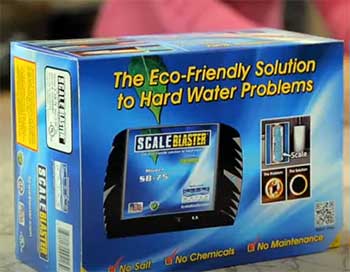
Let me take you back to when I first noticed the hard water havoc in my home.
Living in a region with water so mineral-heavy it could practically double as a geology exhibit, I dealt with crusty faucets, spotty dishes, and a water heater that groaned like it was auditioning for a horror movie.
I’d tried everything—vinegar soaks, scrubbing until my arms ached, even contemplating a traditional water softener. But the thought of lugging 40-pound salt bags and dealing with constant upkeep made me cringe.
Then, I stumbled across the ScaleBlaster SB-75 at Home Depot, and it felt like the universe was throwing me a lifeline.
Installing the ScaleBlaster was a breeze. I’m no plumber, but the instructions were clear: wrap the coils around the main water line, plug it in, and let it work its magic. It took me less than an hour, and I didn’t need to call in a pro.
The device is compact, about the size of a small book, and it hummed quietly once powered on. I was skeptical—how could something so simple tackle my hard water nightmare? But I gave it a shot.
Within a month, I noticed a difference. My showerheads, which used to look like they’d been dipped in chalk, started clearing up. The water felt silkier, and my skin wasn’t as dry after showers.
By the three-month mark, the limescale buildup on my faucets was noticeably reduced, and my water heater stopped making those ominous noises. I even saw better water flow, like the pipes were finally breathing again.
It wasn’t an overnight miracle, and I had to be patient, but the results were real. My dishes came out of the dishwasher cleaner, and my laundry felt softer without that stiff, mineral-crusted texture. The best part? No salt, no chemicals, no hassle. I was sold.
Now, I’ll be honest—it’s not perfect. If your water is harder than a rock (think over 19 grains per gallon), you might need a beefier model like the SB-175 or even a traditional softener. But for my moderately hard water, the ScaleBlaster was a godsend.
It’s been a year, and I’m still amazed at how something so low-maintenance can make such a difference. Let’s break down why I’m such a fan, and where it falls short, so you can decide if it’s right for you.
The Pros of The ScaleBlaster: Why I’m A Fan?
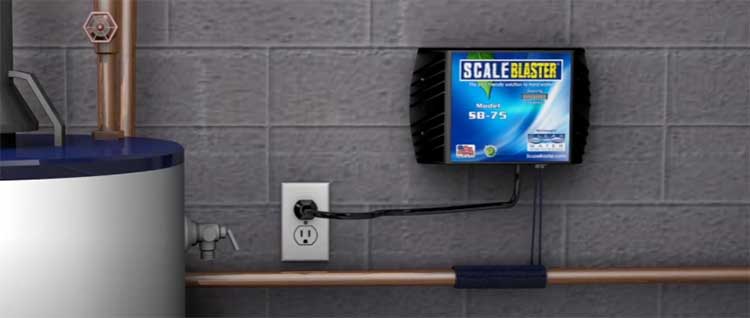
- Salt-Free and Eco-Friendly
You know what I love most about the ScaleBlaster? It doesn’t dump salt into my water or the environment. Traditional water softeners rely on sodium chloride to swap out calcium and magnesium ions, which means you’re constantly buying salt and flushing briny wastewater into the sewer.
In places like Santa Clarita, California, where softener discharges are banned due to environmental concerns, that’s a dealbreaker. ScaleBlaster uses an electronic signal to alter calcium molecules, preventing limescale without adding anything to the water.
It’s a green solution that keeps my conscience as clean as my pipes.
- Zero Maintenance, Seriously
I’m not exaggerating when I say the ScaleBlaster is a set-it-and-forget-it device. Once it’s installed, you don’t need to clean resin tanks, replace filters, or top up salt. My old water softener had me schlepping to the store for salt bags every few months, and the resin tank needed cleaning to avoid gunk buildup.
With the ScaleBlaster, I’ve done nothing but plug it in and let it run. It’s been a year, and I haven’t touched it once. For someone like me who values time and simplicity, this is a massive win.
- Easy Installation for Non-Plumbers
If you can wrap a cord around a pipe and plug in a device, you can install a ScaleBlaster. The SB-75, designed for homes up to 4,000 square feet, comes with clear instructions and requires no special tools or plumbing skills.
I mounted mine on the wall near my main water line, wrapped the coils as directed, and plugged it into a standard outlet. It took less than an hour, and I saved hundreds by not hiring a plumber. Even my neighbor, a 70-year-old retiree, installed hers without breaking a sweat. It’s that user-friendly.
- Protects Your Appliances
Hard water is a silent killer for appliances. Limescale can clog water heaters, dishwashers, and washing machines, reducing efficiency and lifespan. Since installing the ScaleBlaster, my water heater runs quieter, and my appliances seem to be working better.
The device doesn’t just prevent new limescale; it helps dissolve existing deposits over time. I noticed improved water flow in my pipes after a few months, which means less strain on my plumbing. It’s like giving your home’s water system a new lease on life.
- Healthier Water for You
Unlike traditional softeners that strip out calcium and magnesium, the ScaleBlaster leaves these beneficial minerals in the water. I don’t need to worry about sodium sneaking into my drinking water, which is a relief since I’m watching my salt intake.
My water still tastes great, and I don’t need to take supplements to replace lost minerals. Plus, my skin feels softer, and my hair is more manageable—no more of that grimy, hard-water residue. It’s a small change that makes a big difference in daily life.
- Affordable Upfront Cost
Let’s talk money. The ScaleBlaster SB-75 retails for under $300, a fraction of what you’d pay for a traditional water softener, which can easily cost $1,000 or more with installation. Even the pricier SB-175, designed for larger homes or harder water, is a one-time investment.
Compare that to the ongoing costs of salt, maintenance, and higher water bills with a softener, and the ScaleBlaster is a budget-friendly champ. I bought mine on sale at Costco, and it’s already paid for itself in savings.
The Not-So-Good Parts: Where ScaleBlaster Falls Short?
- Not a True Water Softener
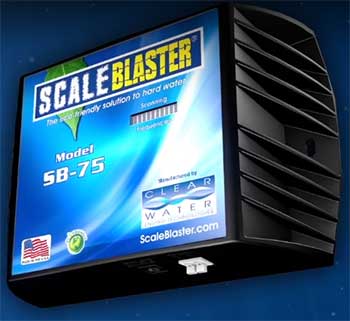
Here’s the deal: the ScaleBlaster isn’t a water softener in the traditional sense.
It’s a descaler that prevents limescale buildup by changing how calcium molecules behave.
If you’re expecting silky-soft water that makes soap lather like a dream or eliminates every trace of hard water, you might be disappointed.
My water feels better, but it’s not as soft as it would be with a salt-based system.
For moderately hard water (up to 19 gpg), it’s great, but if your water is off-the-charts hard, you might need a more robust solution.
- Slow Results
Patience is key with the ScaleBlaster. The manufacturer says it can take 60-90 days to see noticeable results, and I found that to be true. Unlike a traditional softener, which delivers soft water almost immediately, the ScaleBlaster works gradually to dissolve existing limescale and prevent new buildup.
I didn’t see major changes until about six weeks in, and it took a full three months for my pipes and fixtures to really show improvement. If you’re looking for instant gratification, this might test your patience.
- Mixed Effectiveness for Very Hard Water
I’ve read reviews from folks with extremely hard water (over 19 gpg) who weren’t thrilled with the ScaleBlaster’s performance. My water is moderately hard, so the SB-75 worked well, but if you’re dealing with water that’s practically liquid limestone, you might need the SB-175 or even a traditional softener.
Some users report no difference in limescale or water quality, especially with well water, which can be trickier to treat. It’s not a one-size-fits-all solution, so test your water hardness before buying.
- Warranty Hassles
The ScaleBlaster comes with a 5-10 year warranty depending on the model, which sounds great—until you read the fine print. If you buy from eBay or Amazon through an unauthorized seller, the warranty might not apply unless you have a specific registration code.
I got mine from a trusted retailer, so I didn’t have issues, but I’ve heard horror stories about units breaking after a few months and customers struggling to get replacements. It’s a reminder to buy from reputable sources like Home Depot, Lowe’s, or Costco.
- No Water Filtration
If you’re hoping for a system that softens and filters your water, the ScaleBlaster won’t cut it. It doesn’t remove contaminants or improve water taste like a whole-house filter or reverse osmosis system would.
My water was already safe to drink, so this wasn’t a dealbreaker for me, but if you’re on well water with sediment or other impurities, you’ll need a separate filtration system. It’s a descaler, not a purifier, so manage your expectations accordingly.
Maintenance Tips: Keeping Your ScaleBlaster In Top Shape
- Check the Power Supply
The ScaleBlaster needs a constant power source to work its electronic magic, so make sure it’s plugged into a reliable outlet. I’ve got mine connected to a dedicated outlet in my garage, and I check it every couple of months to ensure it’s still powered on.
A power surge or outage could interrupt the signal, so consider using a surge protector if your area is prone to electrical hiccups. It’s a small step that keeps the device running smoothly.
- Inspect the Coils
The coils wrapped around your water pipe are the heart of the ScaleBlaster’s descaling power. Every six months or so, I take a quick look to make sure they’re secure and haven’t loosened. Vibration from water flow or accidental bumps can shift them, so I gently tighten them if needed.
It’s not a frequent issue, but a 30-second check ensures they’re doing their job. No tools required—just a quick visual inspection.
- Monitor Water Hardness
To get the most out of your ScaleBlaster, know your water’s hardness level. I picked up a home water testing kit from a pool supply store for about $20, and it helped me confirm my water was within the SB-75’s range (up to 19 gpg).
If your water hardness changes—say, due to seasonal shifts or a new well—re-test it. If it’s pushing the limits, you might need a stronger model like the SB-175. Staying on top of this ensures the device performs at its best.
- Clean Fixtures Periodically
While the ScaleBlaster helps dissolve existing limescale, it’s not a miracle worker for stubborn deposits. I still give my faucets and showerheads a quick scrub with vinegar every few months to keep them sparkling.
The ScaleBlaster makes this easier since new buildup is minimal, but a little TLC goes a long way. Soak a cloth in vinegar, wrap it around the fixture for 10 minutes, and wipe clean—it’s a low-effort way to maintain that like-new shine.
- Keep the Unit Dust-Free
Since the ScaleBlaster is often installed in garages or basements, dust can accumulate on the unit. I wipe mine down with a dry cloth every few months to keep it clean. It’s not a big deal, but dust buildup could potentially interfere with the electronics over time.
A quick swipe takes less than a minute and keeps the device looking and working like new.
- Follow Manufacturer Guidelines
The ScaleBlaster comes with a manual, and I know it’s tempting to toss it in a drawer, but keep it handy. It includes specific tips for your model, like coil placement and recommended pipe types (copper, PVC, CPVC, or PEX).
I made sure to follow the guidelines for my SB-75, like ensuring the coils were wrapped tightly and spaced correctly. Sticking to the manufacturer’s advice prevents rookie mistakes that could reduce effectiveness.
Comparison With Other Brands: How ScaleBlaster Stacks Up?
Let’s see how the ScaleBlaster holds its own against some big names in water treatment: NorthStar, Sterling, Hague, and Novo water softeners. I’ve dug into their features, costs, and performance to give you a clear picture of what sets the ScaleBlaster apart and where it might not be the top dog.
My water is moderately hard (around 12 gpg), so I’m judging these based on my experience and what I’ve learned from other users.
- ScaleBlaster Vs. NorthStar Water Softener
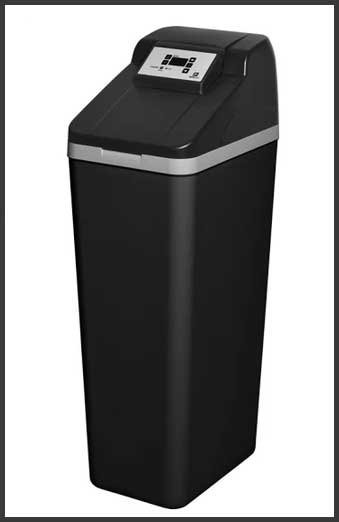
NorthStar’s salt-based water softeners, like the NorthStar NS-40, are heavy hitters for softening water.
They use ion exchange to remove calcium and magnesium, delivering that silky, soap-lathering water I sometimes miss with the ScaleBlaster.
My friend swears by her NorthStar for spot-free dishes and softer laundry, but it comes at a cost—around $1,500 with installation, plus ongoing salt purchases.
The ScaleBlaster SB-75, at under $300, is a fraction of the price and requires no salt or maintenance.
NorthStar’s soft water is superior for very hard water (over 20 gpg), but it adds sodium and produces wastewater, which isn’t ideal in eco-sensitive areas like parts of California.
For my needs, the ScaleBlaster’s affordability and zero upkeep win out, but if you crave ultra-soft water and don’t mind the extra work, NorthStar might be your pick.
- ScaleBlaster Vs. Sterling Water Softener
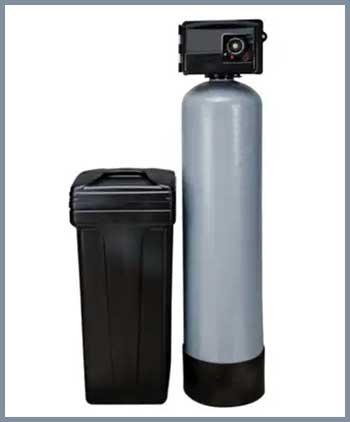
Sterling water softeners, like the Sterling LRM-30, are another salt-based option, known for their compact design and efficiency.
Priced around $1,200, they’re a bit cheaper than NorthStar but still require regular salt refills and maintenance.
A neighbor with a Sterling loves how it eliminates hard water spots, but he grumbles about hauling 40-pound salt bags every month.
The ScaleBlaster, being salt-free and maintenance-free, saved me from that hassle.
Sterling’s water feels softer, especially for showering, but it’s less eco-friendly due to wastewater discharge. If you’re in a smaller home with moderately hard water like mine, the ScaleBlaster’s simplicity and lower cost make it a better fit. For larger homes or harder water, Sterling’s performance might edge out.
- ScaleBlaster Vs. Hague Water Softener
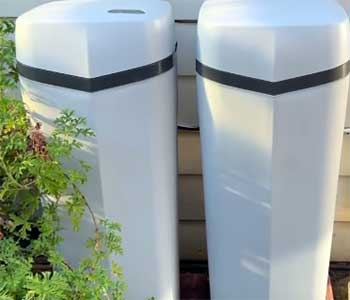
Hague’s WaterMax series is a premium salt-based softener, often costing $2,000 or more with installation.
It’s packed with features like customizable settings and high efficiency, which my cousin raves about for his large family’s needs.
Hague softeners deliver exceptionally soft water, perfect for very hard water (25+ gpg) and heavy water usage.
However, the high upfront cost, salt refills, and maintenance (cleaning resin tanks) are dealbreakers for me.
The ScaleBlaster’s electronic descaling isn’t as powerful for extreme hardness, but its $300 price tag and zero upkeep make it more practical for my 3,000-square-foot home.
If you’ve got a big household or severe hard water, Hague might be worth the splurge; otherwise, ScaleBlaster’s ease wins.
- ScaleBlaster Vs. Novo Water Softener
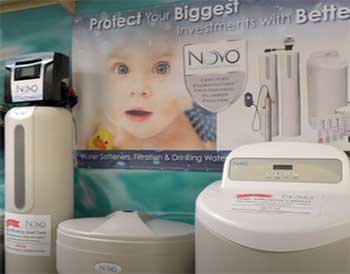
Novo’s salt-based softeners, like the Novo Clear 485, are mid-range, costing around $1,000-$1,500.
They’re reliable for softening water and come with user-friendly digital controls, which a colleague praises for easy operation.
Novo’s systems are great for moderately hard water, much like mine, but they still require salt and produce wastewater, which isn’t ideal in restricted areas.
The ScaleBlaster’s salt-free design and DIY installation (under an hour for me) make it far less hassle than Novo’s professional setup and ongoing costs.
Novo delivers softer water for better lathering, but I prefer the ScaleBlaster’s eco-friendliness and one-time cost. If your water isn’t too hard, ScaleBlaster is the smarter buy.
Overall, the ScaleBlaster shines for its affordability, eco-friendly design, and zero maintenance, making it ideal for moderately hard water like mine.
NorthStar, Sterling, Hague, and Novo offer superior softening for very hard water or larger homes, but their salt-based systems come with higher costs, maintenance, and environmental drawbacks. If you want a hassle-free, budget-friendly solution, the ScaleBlaster is tough to beat.
Frequently Asked Questions (FAQ)
Yes, it works for many users, including me, but with caveats. The ScaleBlaster effectively reduces limescale buildup by altering calcium molecules, preventing them from sticking to pipes and fixtures. I noticed cleaner faucets and better water flow after a few months. However, it’s not as effective as a traditional softener for very hard water (over 19 gpg), and some users report no difference, especially with well water. Results take 60-90 days, so patience is key. If your water hardness is moderate, it’s a solid choice.
Some areas in California, like Santa Clarita, Fillmore, and parts of San Diego County, have banned salt-based water softeners due to environmental concerns. The salty wastewater from regeneration cycles can harm local water systems and ecosystems. Other states, like Texas and Michigan, have local restrictions in certain counties or municipalities. Check with your local water authority to confirm regulations, as bans vary. ScaleBlaster’s salt-free design makes it a great workaround in these areas.
It depends on your needs. A scale filter (or descaler) like the ScaleBlaster prevents limescale buildup without removing minerals, making it eco-friendly, maintenance-free, and ideal for moderate hard water. It doesn’t soften water as effectively as a traditional softener, which removes calcium and magnesium for softer, soapier water. Softeners are better for very hard water or if you want that ultra-soft feel, but they require salt, maintenance, and more water usage. For simplicity and green living, I prefer the ScaleBlaster.
Electronic descalers like the ScaleBlaster work by using electromagnetic waves to prevent limescale buildup, and they’re effective for many users with moderately hard water. I saw reduced limescale and better water flow in my home. However, they don’t truly “soften” water like salt-based systems, which remove minerals entirely. Some users, especially those with very hard or well water, report mixed results. The science is debated, but my experience and many reviews confirm they help with limescale if your water isn’t extremely hard.
Conclusion: Why You Should Get A ScaleBlaster?
After a year with the ScaleBlaster, I can’t imagine going back to the days of crusty faucets and noisy water heaters.
This salt-free, maintenance-free device tackled my hard water problems without the hassle or environmental impact of traditional softeners. It’s affordable, easy to install, and delivers real results for moderately hard water.
If you’re tired of limescale and want a simple, eco-friendly solution, the ScaleBlaster is a game-changer. Grab one from Home Depot or Costco and see the difference for yourself—you won’t regret it.
